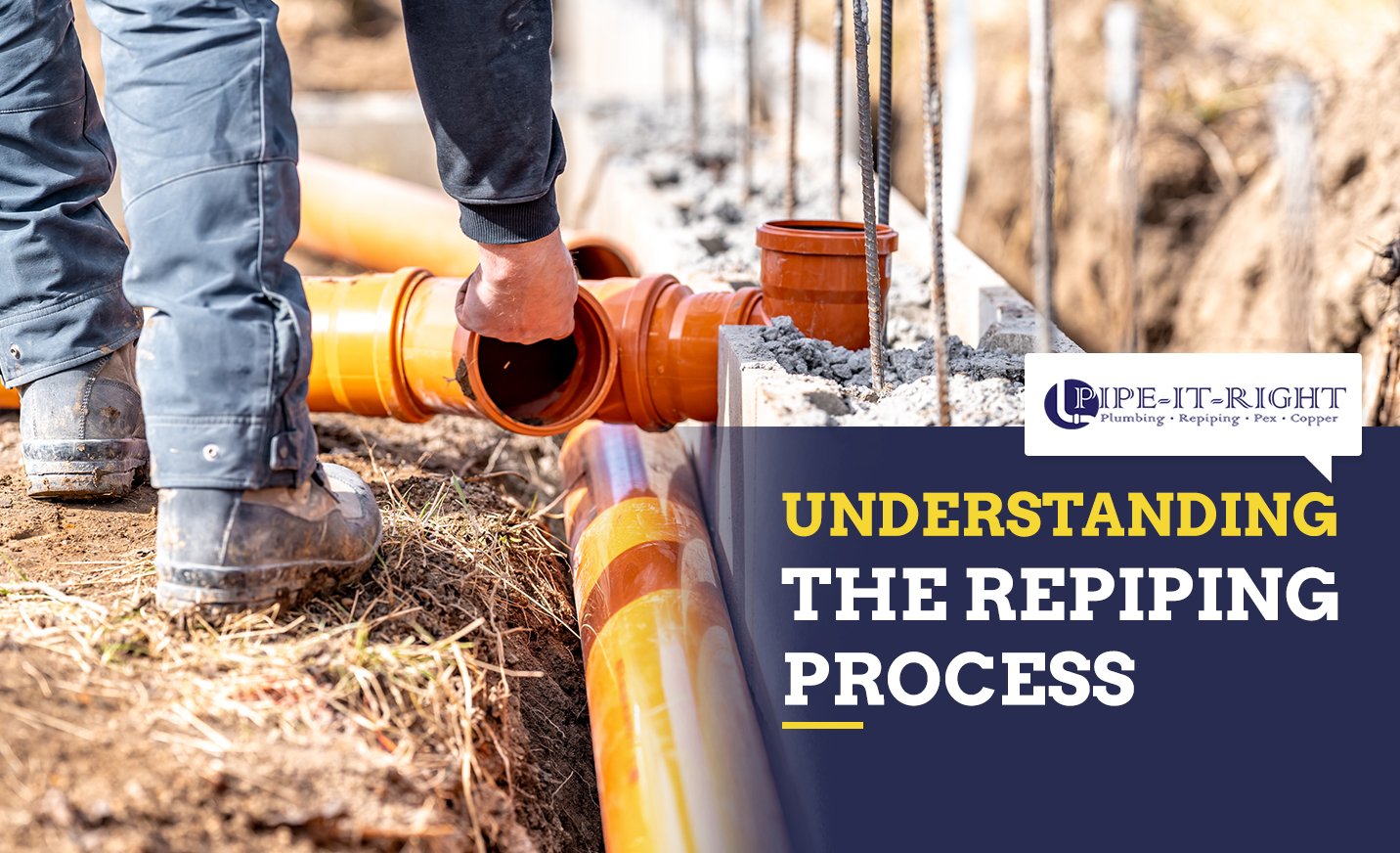Beginner’s Guide to Understanding the Repiping Process
15 Oct Repipe It Right: A Beginner’s Guide to Understanding the Repiping Process
Plumbing issues causing headaches? It’s time to consider repiping your system! If you’re a beginner in this process, fear not. Let’s dive into the “Beginner’s Guide to Repiping” and equip you for a better plumbing experience!
Along with the joys of being a homeowner comes the delightful task of maintaining and upgrading your home to ensure it remains comfortable and functional. And a good plumbing system is one of the most crucial components of a happy home.
If you’ve ever faced issues like low water pressure, leaky pipes, or rusty water, it might be time to consider repiping your home. In this blog, we’ll explore the exciting world of repiping – the process that can transform your home’s plumbing from drab to fab!
Signs that Your Home Needs Repiping
Before diving into the repiping process, it’s essential to identify the signs indicating that your home may require this procedure. Look out for these common red flags:
- Frequent leaks or pipe bursts
- Low water pressure in multiple fixtures
- Discolored or rusty water
- Corrosion on pipes
- Pungent, foul odor from your water supply
- High water bills without any noticeable increase in usage
If you notice any of these signs, it’s time to consider repiping to prevent further damage and potential water-related disasters.
>> Related Reading: Is It Time to Repipe Your Home? Signs You Should Know
Understanding the Repiping Process
Repiping can be a daunting prospect, but with a basic understanding of the process, you’ll be better prepared for what’s to come. Here’s a step-by-step breakdown of the repiping procedure:
Step 1: Plumbing Inspection : A professional plumber will conduct a thorough inspection of your home’s plumbing system to assess the extent of the damage and determine if repiping is necessary. They will also identify the best course of action and create a detailed plan for the repiping project, including a timeline.
Step 2: Preparations : Before starting the repiping process, the plumber will turn off the main water supply to your home. They will also take measures to protect your belongings and minimize disruptions during the project.
Step 3: Pipe Replacement : As you might expect, the next step involves removing the old, damaged pipes and replacing them with new, high-quality ones. Modern repiping often involves using durable materials like copper or PEX (cross-linked polyethylene) pipes, which have a longer lifespan and offer superior performance.
Step 4: Minimizing Damage : Professional plumbers use techniques to minimize damage to your walls, ceilings, and floors during the repiping process. They may create small access points or utilize existing openings to thread the new pipes through the walls.
Step 5: Pressure Testing: After installing the new pipes, the plumbing system undergoes a pressure test to ensure there are no leaks. This critical step guarantees that your new plumbing system functions properly and prevents any future issues.
Step 6: Finishing Touches: Once the pressure test is successful, the plumber will complete the repiping project by patching up any access points and restoring the walls and floors to their original condition.
The Benefits of Repiping
Repiping your home offers numerous advantages, making it a worthwhile investment:
Improved Water Quality: Installing new pipes eliminates rust and corrosion, improving the quality and taste of your water.
Enhanced Water Pressure: Repiping improves water flow, eliminating low water pressure issues.
Prevents Future Leaks: By replacing old, damaged pipes, you avoid the risk of costly leaks and potential water damage.
Energy Efficiency: New pipes reduce water waste and can lead to lower utility bills.
Increased Home Value: Repiping adds value to your property, making it an attractive feature for potential buyers.
>> You might be interested in reading this guide on 4 Advantages of Repiping Your Home
In Summary
Understanding the basics of the repiping process is essential for homeowners facing plumbing issues that demand immediate attention. By recognizing the signs of deteriorating pipes and comprehending the steps involved in repiping, you can take proactive measures to secure your home’s plumbing system for years to come.
If you’re uncertain about the severity of your plumbing issues or need professional assistance, your best bet is to consult a licensed plumber who can guide you through the repiping process and ensure a smooth transition to a more efficient and reliable plumbing system. Don’t hesitate to reach out to us today!


